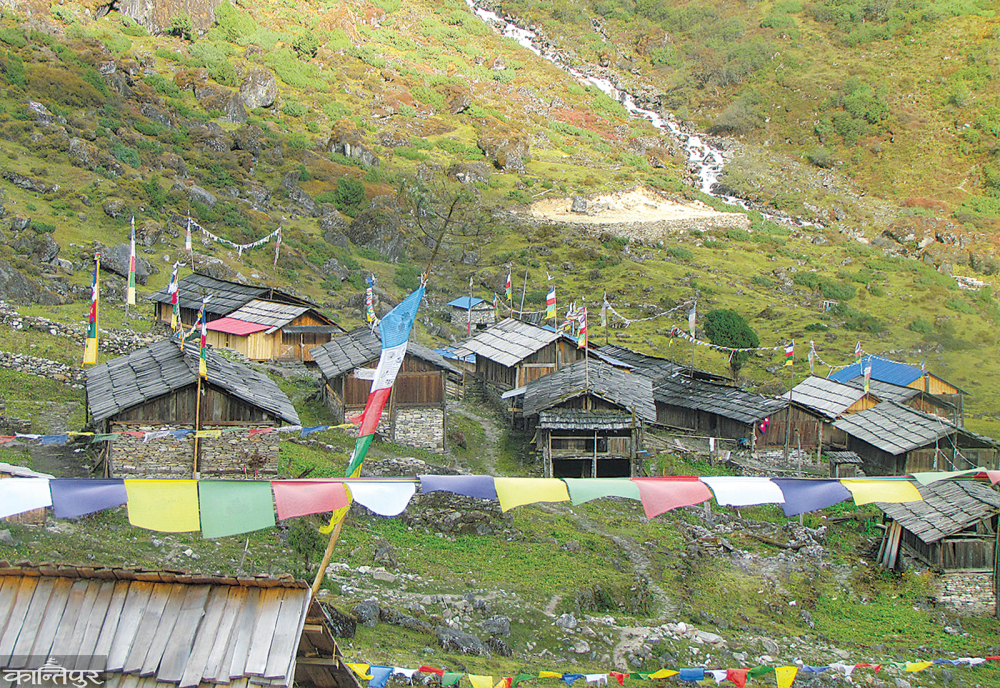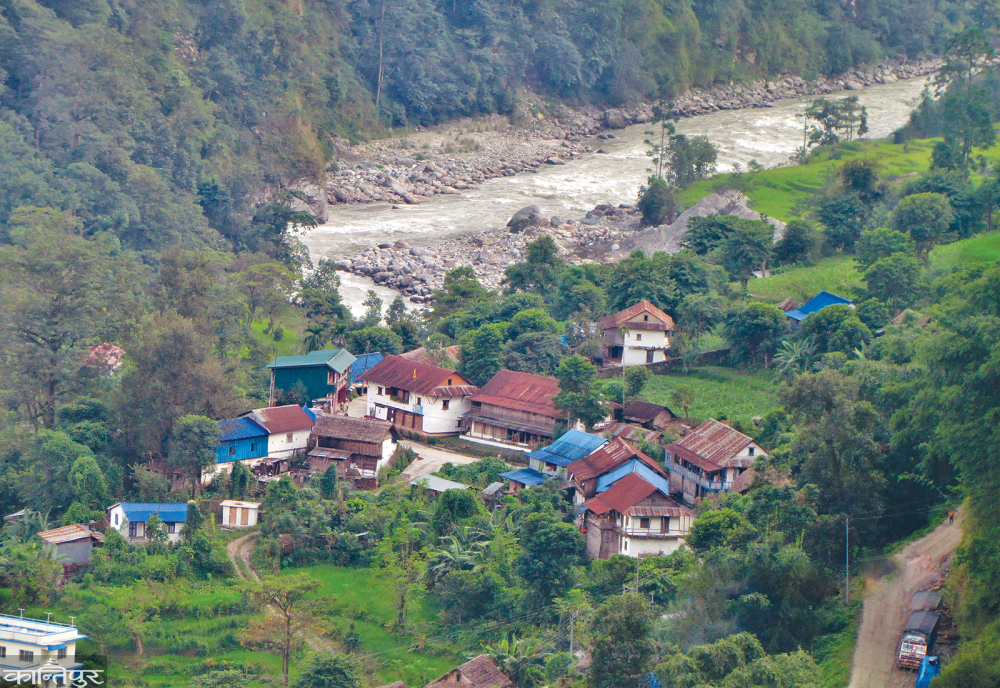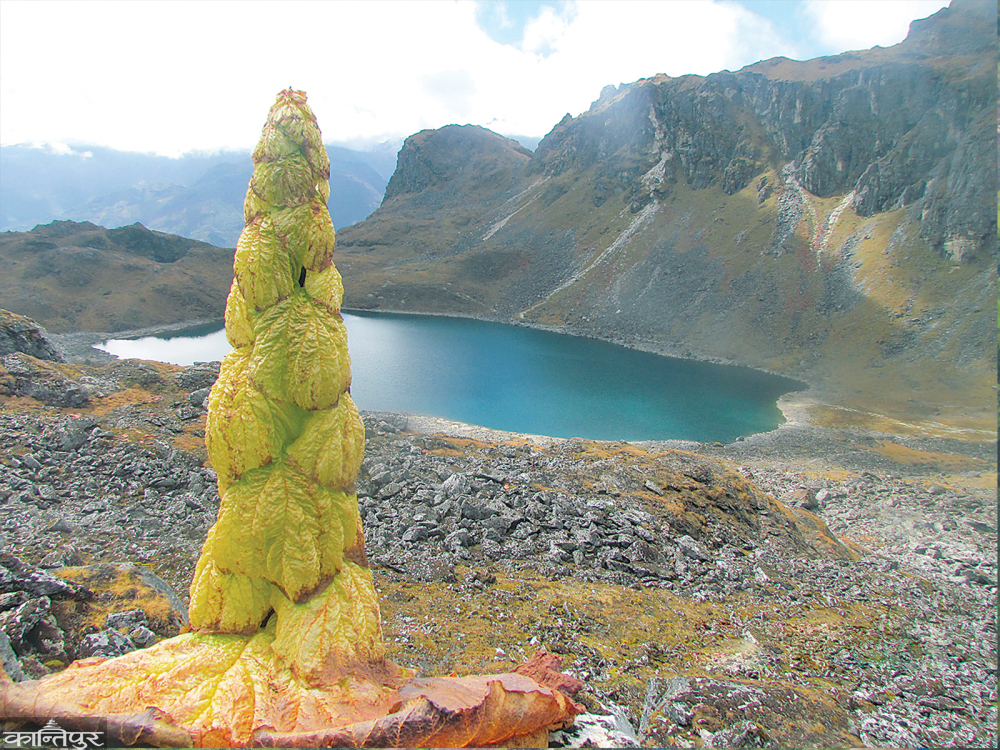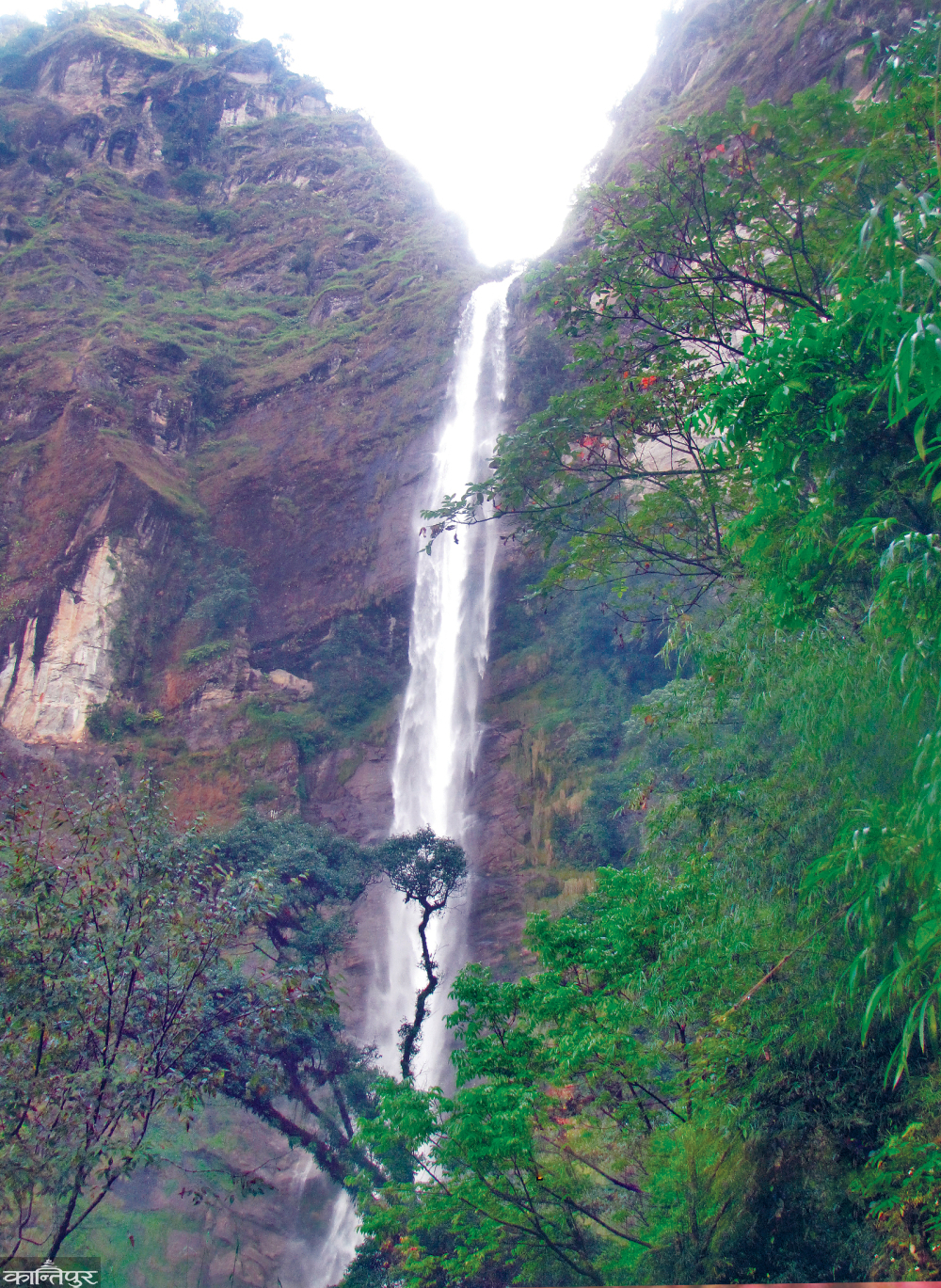Cannonball boom
We use Google Cloud Translation Services. Google requires we provide the following disclaimer relating to use of this service:
This service may contain translations powered by Google. Google disclaims all warranties related to the translations, expressed or implied, including any warranties of accuracy, reliability, and any implied warranties of merchantability, fitness for a particular purpose, and noninfringement.


The trip to Topkegola a few months ago helps to understand the myths, history and age-old stories of people living in Nepal. Professor Balkrishna Mawohang, anthropologist Dr. Uddhav Rai, Jag Bahadur Budha and I traveled through Topkegola in Taplejung to Kimathangka in Sankhuwasabha.



On the first day, we reached Sangupati market in Taplejung Maivakhola. Earlier, the local Sayambahang Limbu built a pati here, so this place is called Sangupati. That board is still there. Later, when the market started here, it is called Sangupati market.
In the morning, we warmed up the road to Tembe village. The village of Tembe is located in a flat/plain terrain. Perhaps that is why this place is called Tembe. The flat/plain land is called Tembe by the Limbus. Tembe thari Limbus were also found living in this village. We descended again. Below came the village of Fatengre. A Sherpani woman was found here selling eggs. Sherpeni, who looked like Limbooni, wore a lungi, patuki, vest and Tilhari around her neck. This is where I first saw Sherpa women wearing tilhari as well, probably due to the influence of Hindu culture. We bought and ate those sherpenikos and went back to Ohrala.

now reached Dobhan Bazar. Located at the confluence of Maiwakhola and Tamor rivers, this market is the second largest market in Taplejung. We entered a hotel to have lunch. Above, a group of Sherpas from Odak village were found eating lunch inside the hotel. These Sherpas, who looked like Rai/Lemons in dress, said they were Kulung Sherpas. Their words also became new to me because I understood that only Rais are Kulung thari. What happened was that after one of the Sherpas from Solukhumbu married the daughter of Kulung, according to the social customs of the village, the Sherpa couple left the village and came to Taplejung through the former Sankhuwasabha. Later their descendants became the Kulung Sherpas. They are the Kulung Sherpas currently living in Odak village.
From Dobhan Bazar, we now entered Meringden rural municipality area through the uphill road. Three Sherpa youths met on the way. They named Kusum, Krishna Bahadur and Chandraveer Sherpa. Sherpas are found to have names such as Tenzing, Chhiring, Lakpa, etc., which are the names given since their birth, but seeing these Sherpa youths having such Hindu, Nepali speaking names, I felt a little strange, but why did they have such names? She asked about that. The Sherpa youth went down, we went up. Now we reached Bar Banjang Hill. From here the road turned horizontally towards Khamlung village.

After reaching some distance, a Sherpa house was found where the pig was being slaughtered. Yuma deity was also worshiped in the courtyard of the house. I know that the Limbos worship Yuma when slaughtering a pig at home because Yuma is considered by the Limbo as their paternal favorite deity, but this is where I learned that the Sherpas also bow to Yuma when slaughtering a pig. What happened later was that since they came here from Solukhumbu and settled in Taplejung area, these Sherpas have also started to believe the gods of Limbus here. That's why these Sherpas have been worshiping Yuma like this while slaughtering a pig. We bought three kilos of pork and set off.
In the evening we reached Dingla village. The local Limbus named this place as Tingala as earlier there was only Kandaghari in this place. Kadaghari is called Tingala by Limbus. It is now called Dingala.
The road started again in the morning from Dingla. Passing through the village of Thukima, we reached Mikvakhola. This mikva river also found its own kind of story. According to a popular myth in this region, when a battle was fought over him at Munakham (vote), many children of a woman named Mudikma died in the battle. Then Mudikma brought him down here to save his remaining children. After coming here, they sit together on a Changlung stone, at that time they start to cry remembering their children who died in the war above. Her tears started flowing and it became a river. The river was later named Mikvakhola because it was a river formed by Mudikma's tears. A river made of tears is called a mikvakhola by the Limbu. Today it is also called Mewakhola. It is said that the descendants brought by Mudikma are the Limbus who are currently living in this Mikwakhola (Mewakhola) area of Taplejung.

After crossing the mikvakhola, we went up again. Now we reached Temba village. Mudensong Sanwa Limbus were found living in Temba village. Some of the Mudensong Sanwas here have also been lemons from Bhotia. According to the local people, a Bhotia came here from above and started living in the river near the Yumiqua pond, making wooden tongwa. Later Sanwa Limbus here sent that Bhotia as their own brother and his children later became Mudensong Sanwa Limbus. Bhote-Bhotia is called Muden-Mudenwa by Limbus.
In the morning we saw the famous Phungfunge waterfall of this place. This waterfall, which was named Phungfungden Wadham by the Limbu people here, is now called Phungfunge waterfall. According to the Limbu myth, there used to be a man-eating demon living in this waterfall, who used to eat the children of the village. What happened once was that 'Tungdunge Sammang', the deity of Sanwa Limbus of this village, came to this waterfall in the form of a small child. After seeing the child, the demon came out. And, Khan grabbed the boy, at which time the boy, Yaniki Tungdunge Sammang, killed the demon right there. It is said that only then were the children saved in this place. We reached near the waterfall. A long stone pillar worshiped as a deity was also found here. According to the myth, in a village below, a man and a woman gave birth to a son. Later they brought a long stone here as an atonement to get rid of their sins and buried it, considering it as a god and started worshiping this stone for forgiveness. Later, this stone has been worshiped as Mahadev. We also offered offerings to this stone.
From Temba village, our journey turned uphill to Topkegala. Above came a Tangkhuk village. The name of this village was also found to be from Limbu language. According to the locals, the son born to Hadnata in the village below was brought here and kept. As there is a folk-belief among the Limbus that a child born from a womb will be struck by lightning and killed, the man has planted a large stone umbrella here to avoid being struck by lightning if it falls from the sky later. Since then this place has been called Lungtangkhuk. The stone umbrella is called Lungtangkhuk by the Limbos, which is later called only Tangkhuk and the village here is called Tangkhuk Village.

The children of that man later became Fenchhangwa Limbu.
From Tangkhuk, passing through Papung, we reached Tartung village and stayed at Kanchhi Sherpeni's house. Only the youngest and his sister Angela were in the house. Their parents are sitting upstairs. In the morning we went up again with little Sherpenny. In the evening, we reached Topkegola and directly entered the house of the younger Sherpeni's parents. The only people in the house were Tenzing's father Tenzing and his wife Pema's sister-in-law. Twenty-five/twenty-six other houses were also seen in this vicinity, but no one was seen in the houses. The people here are living towards Papung. They only come here during the rainy season to stock up and pick herbs. Tenzing Dai started gossiping with us. According to him, he is Chaiva Bhotia. The Bhotias living around this hill came from different places in different periods. They call themselves Bhotia, and if someone asks about their caste or surname, they say Dhokpya. It is understood that Dhokpya means Bastugotha. However, the government of Nepal says that these Bhotias living in Topkego are found to be caste by Topkego, but this Topkego is the name of a place rather than a caste. Tenzing said.
In the morning we went up again with Tenzing and we reached the Changlung stone where he was sitting in Mudik. Some remains of an old house were also found here. According to Tenzing, this place used to be a trading post with Tibet, and there was also a large trading market here. Perhaps is this place called Topkegola because there is a trading market like this? More studies are needed on this.



















